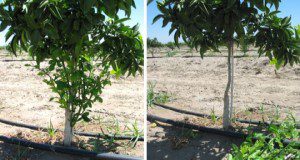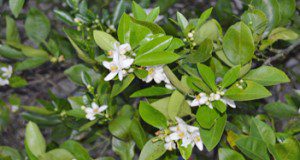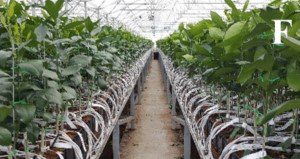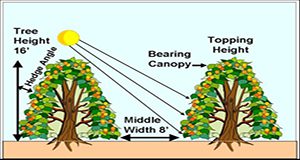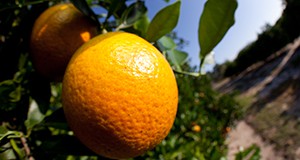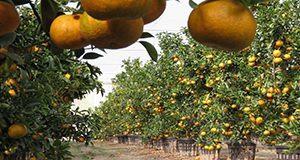Canopy management is a useful tool to induce precocity and maintain high production of optimum-sized, high-quality fruit. The aim of this new 8-page publication of the UF/IFAS Department of Soil and Water Sciences is to provide growers with practical tools with which to manage their trees for maximum fresh-fruit yield, quality, and profitability. Written by Andrew Krajewski, Arnold Schumann, Tim Ebert, Chris Oswalt, Rhuanito S. Ferrarezi, and Laura Waldo.
https://edis.ifas.ufl.edu/ss698
Tag: Citrus Cultural Practices
Management Options for Improving Flowering in Citrus Production
The final fruit yield and, ultimately, returns a grower receives from any given harvest is directly related to the number of viable flowers that are generated and the proportion of those flowers that produce fruit. A grower can improve the ability for their trees to consistently produce a profitable crop of fruit by understanding the steps involved in flowering and controlling the transition to reproductive growth. This new 6-page publication of the UF/IFAS Horticultural Sciences Department was written by Leigh Archer, Miurel Brewer, Bikash Adhikari, Eduardo Esteves, Christopher Vincent, and Tripti Vashisth.
https://edis.ifas.ufl.edu/hs1399
Stock Plant and Tree Production: Irrigation and Fertilization
Citrus tree production in nurseries can be divided into three stages: production of rootstock liners, transplant of rootstocks into larger containers, and bud grafting. The objectives of this new 6-page publication of the UF/IFAS Horticultural Sciences Department are to provide general information on irrigation and fertilization for production of citrus nursery trees in seedbeds, nurseries and budwood multiplication blocks. This article, written by Rhuanito Soranz Ferrarezi, is chapter 8b of the forthcoming Citrus Nursery Production Guide.
https://edis.ifas.ufl.edu/hs1333
Canopy Management of Citrus Trees
Tree canopy and bearing volume are two important factors in fruit production and fruit quality; generally, trees with larger canopy volumes produce more fruit than smaller-canopy trees. Therefore, canopy management is an important aspect of citrus production in Florida to avoid problems associated with overcrowding and excessively tall trees. This three-page document describes canopy management practices for citrus growers. Written by Tripti Vashisth, Mongi Zekri, and Fernando Alferez and published by the UF/IFAS Horticultural Sciences Department, October 2017.
http://edis.ifas.ufl.edu/hs1303
Grove Planning and Establishment
Many factors need to be considered when preparing for new tree plantings. Careful planning and preparation is necessary to ensure success and reduce future frustrations. This three-page document describes the factors that contribute to the success of new grove establishment. Written by Mongi Zekri, Ute Albrecht, Christopher Vincent, and Tripti Vashisth and published by UF’s Horticultural Sciences Department, September 2017.
http://edis.ifas.ufl.edu/hs1302
Citrus Under Protective Screen (CUPS) Production Systems
Citrus can be grown under protective screen structures for fresh fruit production in order to completely exclude the Asian citrus psyllid and therefore huanglongbing disease (HLB, citrus greening). The benefits of eliminating HLB are immediate and include rapid, normal tree growth, higher yields of quality fruit, negligible fruit drop, and uncomplicated fertilizer and irrigation requirements. Because CUPS is a relatively new citrus production system with new challenges, current guidelines are preliminary and undergoing constant refinement through research. This summary of concepts, progress, and tentative recommendations from the first three years of CUPS research in Florida written by A. W. Schumann, A. Singerman, A. L. Wright, and R. S. Ferrarezi and published by the Horticultural Sciences Department was condensed from a comprehensive CUPS Quick Start Guide that will be published and updated on the UF/IFAS EDIS website.
http://edis.ifas.ufl.edu/hs1304
Citrus Reset Management
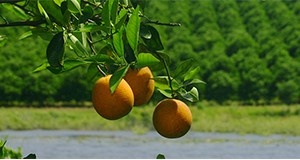
Replacement of dead and diseased trees in Florida citrus groves has always been an important part of citrus production. Today, tree replacement is more important than ever since overhead and production costs are escalating and a full stand of productive trees is essential to maximize production and profits. In more recent times, Huanglongbing (HLB), or citrus greening, has accelerated tree loss rates as well as the ability for growers to bring young citrus trees into production. This five-page fact sheet discusses a wide range of techniques for providing young tree care. Many of these should prove useful to Florida citrus growers confronted with the problem of managing resets. Written by Stephen H. Futch, and published by the Horticultural Sciences Department.
http://edis.ifas.ufl.edu/ch025
Mechanical Pruning of Citrus Trees

When citrus trees are not regularly pruned, less sunlight reaches the lower parts of the trees, which can reduce flowering and fruit development, quality, and color. Less sunlight also increases the risk of fungal infection. This 3-page fact sheets explains how growers can prune trees to maximize light exposure. Written by Mongi Zekri, and published by the UF Department of Horticultural Sciences, August 2015.
http://edis.ifas.ufl.edu/hs1267
Resetting in Citrus Groves

To maintain the overall productivity of a citrus grove, dead or declining trees should be promptly removed and replaced with young, healthy trees, a practice known as resetting. Resetting presents many challenges for growers because young trees require more attention and care than more established trees. This 4-page fact sheet discusses effective resetting methods and maintenance for citrus. Written by Zekri Mongi, and published by the UF Department of Horticultural Sciences, August 2015.
http://edis.ifas.ufl.edu/hs1266
GAPs for the Florida Citrus Grower: Understanding the Principles of Good Agricultural Practices (FSHN1203/FS187)
 Growers are the first step in the farm-to-table food chain. Good Agricultural Practices (GAPs) refer to practices growers follow to prevent, minimize, or eliminate contamination and hazards to human health. Essential components of the GAPs process include careful planning, implementation, and documentation of required steps and procedures that together analyze and minimize risks imposed by biological, chemical, and physical hazards. The general guidelines presented in this document were developed by UF/IFAS for Florida citrus growers, in partnership with the citrus industry. This 8-page fact sheet was written by Michelle D. Danyluk, Renée M. Goodrich-Schneider, Keith R. Schneider, Mark A. Ritenour, and Timothy M. Spann, and published by the UF Department of Food Science and Human Nutrition, February 2012.
Growers are the first step in the farm-to-table food chain. Good Agricultural Practices (GAPs) refer to practices growers follow to prevent, minimize, or eliminate contamination and hazards to human health. Essential components of the GAPs process include careful planning, implementation, and documentation of required steps and procedures that together analyze and minimize risks imposed by biological, chemical, and physical hazards. The general guidelines presented in this document were developed by UF/IFAS for Florida citrus growers, in partnership with the citrus industry. This 8-page fact sheet was written by Michelle D. Danyluk, Renée M. Goodrich-Schneider, Keith R. Schneider, Mark A. Ritenour, and Timothy M. Spann, and published by the UF Department of Food Science and Human Nutrition, February 2012.
http://edis.ifas.ufl.edu/fs187
HS1139/HS392 Casuarina cunninghamiana Miq. (River sheoak) in Florida and its Potential as a Windbreak Plant for Citrus Groves
HS-1139, a 12-page illustrated fact sheet by William S. Castle, compiles pertinent information and provide an historical perspective for environmentalists, biologists, scientists and other interested parties regarding the Casuarina species in Florida which are presently classified as invasive and illegal to possess or propagate. Includes references and a summary of regulatory authorities. Published by the UF Department of Horticultural Sciences, May 2008.
http://edis.ifas.ufl.edu/HS392
HS1138/HS393 Citrus Tree Stresses: Effects on Growth and Yield
HS-1138, a 6-page illustrated fact sheet by J. Syvertsen and E.A. Hanlon, provides information dealing with citrus responses to environmental conditions for professionals involved with citrus management practices. It explains how citrus trees respond to changes in availability of water and nutrients; discusses plant-stress situations and their effects on citrus growth and productivity; and discusses the balance between roots and shoots. Includes references. Published by the UF Department of Horticultural Sciences, May 2008.
http://edis.ifas.ufl.edu/HS393
